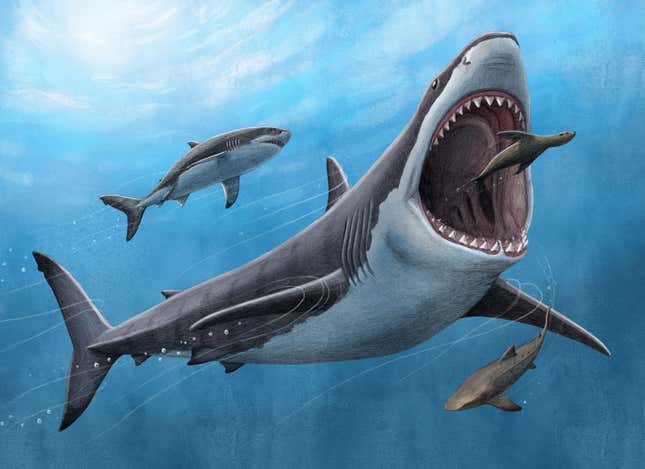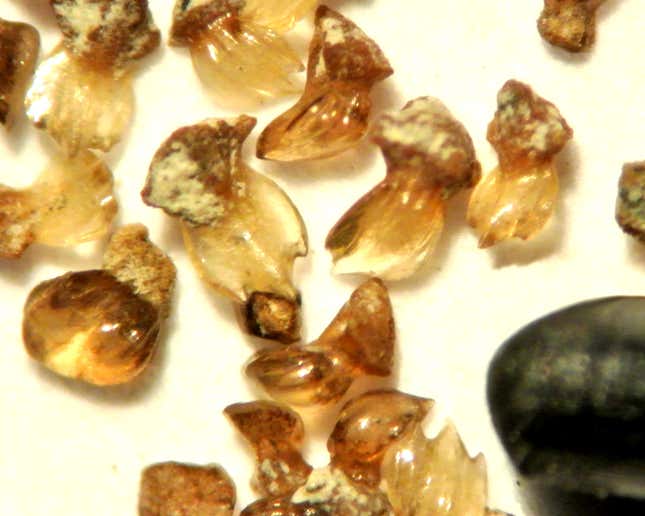
Sharks are often imagined as lethal predators with rows of razor-sharp teeth and capable of zipping through the water at high speeds. But it seems in the case of the famous prehistoric shark Otodus megalodon, only one of those premises holds true.
In a study published in Historical Biology, a team of researchers describe very small O. megalodon scales found in Japan. These sand-grain-sized placoid scales, or denticles, show up in elasmobranchs, a group of fish that includes sharks and rays. Unlike bony fish scales, placoid scales stay the same size through the animal’s life.
“Because of the assumption that O. megalodon must have been at least partially warm-blooded, the fossil shark was previously envisioned to be a fast-swimming, active predator,” said Kenshu Shimada, a paleobiologist at DePaul University in Chicago, in an email to Gizmodo.
“However, the new study that examined the fossil scales of O. megalodon suggests that it likely swam much slower than previously thought or was likely an ‘average swimmer’ at best in the shark world,” he added.
The extinct shark could grow a staggering 65 feet long, and thrived in oceans around the world from 15 million years ago until about 3.6 million years ago. Newborn individuals were about six feet long (about the size of some full-grown humans), and the species probably participated in filial cannibalism, by which siblings would eat siblings, leaving only the survivors to grow into adulthood.

O. megalodon was a lamniform, making it a relative of modern sharks like the thresher shark, mako shark, and, of course, the great white shark, which may have pushed its larger relatives to extinction.
The researchers found that O. megalodon’s placoid scales lacked the ridges (called “keels”) present in rapid sharks, indicating that the apex predator was more an occasional speedster than a full-time racer.
O. megalodon was still a terrific predator of the Pliocene oceans, but it probably used “bursts of faster swimming for prey capture,” Shimada said in a DePaul University release, rather than always moving at such a clip.
The fossil scales are associated with a set of 73 teeth from an individual O. megalodon that was found in Japan in the late 1980s. The shark’s remains remained scattered on the seafloor as it decomposed, leaving the scales to be discovered millions of years later.
With the species moving slower than previously thought, the researchers pondered where the sharks put their metabolic heat.
“Our research team realized that, just like some modern sharks that are partially warm-blooded, it likely used the body heat to warm up its stomach and intestine to facilitate digestion and nutrient absorption,” Shimada said in an email. This makes sense because O. megalodon must have swallowed large pieces of meat, and its body heat must have given an extra boost to facilitate food processing.”
In other words, because the warm-blooded shark moved slowly, it put its energy towards eating a lot. Megalodons—they’re just like us!
More:Two Bull Sharks Swam Up the Mississippi River All the Way to St. Louis